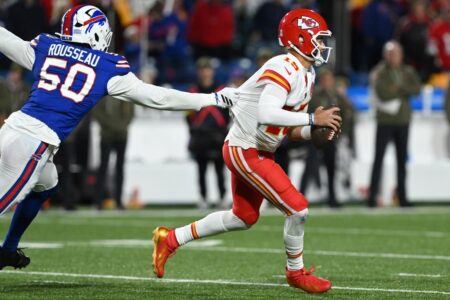Willie Mays, who had 24 All-Star Game appearances in a major league career that spanned four decades, died Tuesday at 93. He was baseball’s oldest living Hall of Famer.
Mays hit 660 home runs, stole 339 bases, and batted .301 from 1948-73 with the Birmingham Black Barons, New York/San Francisco Giants, and New York Mets. He led the Giants to their last World Series championship in New York in 1954 and was inducted to the Hall of Fame in 1979.
It is with great sadness that we announce that San Francisco Giants Legend and Hall of Famer Willie Mays passed away peacefully this afternoon at the age of 93. pic.twitter.com/Qk4NySCFZQ
— SFGiants (@SFGiants) June 19, 2024
The death of Mays comes two days before Major League Baseball was scheduled to stage a unique regular season game between the Giants and St. Louis Cardinals at Birmingham’s Rickwood Field. Mays, a native of Westfield, Alabama, had announced only Monday that he would not be able to attend the game.
As a teenager, Mays began his professional career with the Black Barons in 1948. He played with them before beginning his career as a member of the New York Giants in 1951. Rickwood Field was the site of the final Negro League World Series game in Oct. 1948, which saw Mays’ Black Barons lose to the Homestead Grays in five games.
In his first season in a Giants uniform, Mays won the 1951 Rookie of the Year Award. He missed the entire 1953 season after he was drafted by the Army to serve in the Korean War but never saw active duty.
In 1954, Mays batted a major league-leading .345 while hitting 41 home runs and driving in 110 runs en route to a National League MVP award. That October, he led the Giants to their first championship since 1933. Mays’ catch of a Vic Wertz fly ball in center field at the cavernous Polo Grounds is still considered one of the greatest catches in baseball history; that it came in Game 1 of the World Series merely added to its legend:
In the years to come, Mays would establish himself as one of baseball’s biggest stars, at a time when many major league teams were still integrating black players to their roster.
Mays made the move west with the Giants to San Francisco in 1958. Between the pitcher-friendly confines of Candlestick Park and the year he lost to military service, many baseball historians consider Mays’ home run total to be a poor reflection of his prodigious power. He still ranked third on the all-time career home runs list at the time of his retirement, and is sixth today.
Mays returned to New York to play the final two years of his career with the Mets (1972-73), but he is most closely associated with the Giants, who retired his number 24 after his retirement as a player.
Read the full article here














